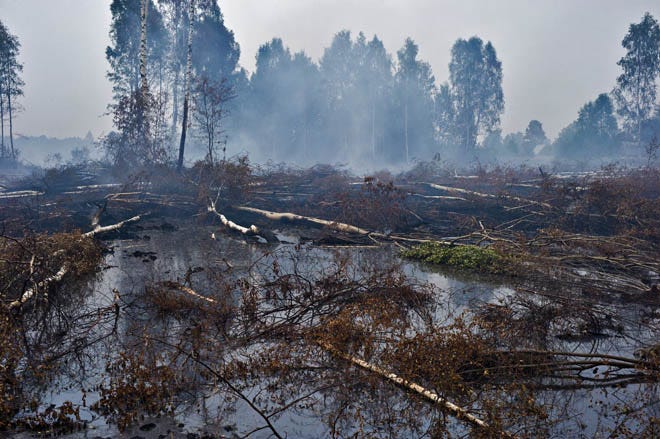Bogs don’t have a good reputation. The word bog has negative connotations (mainly toilet-based) and brings to mind smelly, wild places where lone women get pushed in during foggy nights. Bogs are bad news. Their public image is in tatters.
Which is why, as we creep from winter into spring (creep being the operative word here), I want to celebrate bogs and do a bit of free PR for them. After all, a newsletter called PR for the Planet can’t be all about people and how bad we are. Sometimes it’s about highlighting the hardworking bog, which is just hardworking-ly stinking up the background without a complaint in the world.
There’s a bog in Edinburgh I’ve been visiting recently. It’s a nice place to sit near. It’s sort of stinky, and to be fair, it’s best appreciated at a distance. But I like looking down at it in all of its gloopy glory while the other tourists are staring at the sea.
Hunter’s Bog in Holyrood Park in central Edinburgh has two five star reviews on Google. Edinburgh is like a pick n’ mix of the rest of Scotland. It features a small (5*!) bog, but it’s a nod towards better, more highly ranked peat bogs up north. One is the 200,000 hectares of bog covering the Flow Country in Caithness, which meant nothing to me until I read an article about bog listening and artistic installations around Scotland’s bogs. Artists have built installations in Scotland’s bogs, encouraging visitors to tune into the bog noises below. And you can go and tramp around this massive peat bog too.
So, bogs are great, but why? Let’s go:
Bogs are carbon sinks. Trees are also carbon sinks (they store carbon) and tend to get much more press than bogs. 60% of the worlds bogs are peat bogs, made from millennia of crushed sphagnum mosses all decomposing into one big lump (the bog). This is the stored carbon.
It can take 1,000 years to form a metre of peat. That’s a long time.
Peat bogs are really low in nutrients which means plants struggle to grow in them. But that also means if they’re undisturbed, the carbon they contain is usually contained too.
Peatlands cover just 3% of the world's surface but hold nearly 30% of the soil carbon. That’s insane, right?
The world's largest wetland is the peat bogs of the Western Siberian Lowlands in Russia, which cover more than a million square kilometre
Although it looks like gungy sludge, peat bogs are 10% solid material and 90% water
Peat bogs are a great place for detectives to unearth murder victims
Peat bogs are also a great place for archeologists to unearth historical missing bodies. One of the most famous is the Tollund Man. Why? “As new peat replaces the old peat, the older material underneath rots and releases humic acid, also known as bog acid. The bog acids, with pH levels similar to vinegar, preserve human bodies in the same way as fruit is preserved by pickling.”
Why are bogs so important when it comes to preventing climate change?
First off, they store a lot of carbon. If you start messing around with peat bogs - that includes building on them and draining them – you release an awful lot of C02 and methane into the atmosphere. Without water, they dry out – and that’s when carbon dioxide may be released.
Bogs are also a natural flood defence system. They catch a lot of run-off water. Without bogs, that water has to run somewhere else, potentially leading to flooding.
They’re also masters of filtration. They filter water and naturally clean it.
How do we protect them?
We need to think about ways to re-wet peat bogs that are drying out in areas where rainfall is diminishing. You can tell what a healthy bog looks like if plants such as cotton grass, cross-leaved heath, bog rosemary and round-leaved sundew have made homes nearby.
Many of us live close to a bog. We might not even know it. This IUCN peatlands map shows all of the bogs across the UK and some across the US too. It’s a great tool to enable you to go and visit a blog and get up close and personal with one. They’re doing an awful lot of heavy-lifting, and they’re special, beautiful places too. We should make the most of them. So next time someone recommends a trip to a beach or a hike up a beautiful mountain, wag your finger at them. No. No, today is time for a trip to the bog. Even the stinkiest things in life have to be appreciated sometimes.






